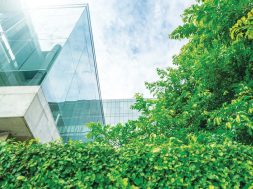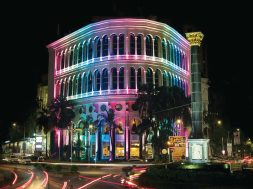How the proposed industrial corridors are energising the growth and development of new cities
Mumbai is the fourth most populated urban centre in the world. As of 2011, more than 11 million people jostle about within its boundaries. A highly strained public transportation system is highlighted byan ever-increasing number of private vehicles on roads. With a population of more than 1.24 crore besides additional fluctuating population of 30 lakh, congestion is indeed a long-term problem. Now we need to sit and work out new solutions that are not only different from the earlier ones but also review the issue of urban decay using a new paradigm.
Today, connectivity is increasingly becoming important. With the emergence of new communication avenues, a good, reliable transport network remains vital. There is a positive correlation between a country’s economic development and the quality of its road network. Reducing the distance among people, markets, services and knowledge or simply ‘getting people connected’ is a great part of what economic growth is all about.The Government of India has initiated projects toward this and has begun developing new infrastructure alternative growth corridors and gradually moving communities away from the present population epicentres. Last few years have been remarkable for infrastructure road development in the country as the Indian Government has significantly increased its infrastructure spending. As a result, most of the significant and strategically important cities of India are being connected. India’s economic growth recently seems to be nourished by fresh investment flows; researchers think that transport investment plays an important role in the urbanisation and spatial development.
The Indian Government has undertaken many large-scale infrastructure ventures such as the Delhi Mumbai Industrial Corridor (DMIC) for which it has collaborated with Japan for financial and technical support. Japan has committed to invest $4.5 billion in the government ambitious $90 billion DMIC project. The project is aimed at creating mega industrial infrastructure along the Delhi-Mumbai Rail Freight Corridor, which is under implementation. Japan is giving financial and technical aid for the project, which is developed on either side of a 1,483-km stretch running across seven states. DMIC scope and developmentDMIC has the potential to transform and develop the economy of the region that it covers. Equipped with an array of infrastructure facilities such as rail, ports and power, the freight corridor is expected to spark development in the outskirts of Maharashtra with an eruption of future cities, especially in the Raigad district. With the cost of $90 billion, DMIC will be completed by 2036. The railway freight is expected to shoot up to 3 lakh million tonnes per annum from the present 44 million tonnes.
There are four main benefits of thinking about new growth corridors. First, new cities, towns and communities can be master planned. Growth tends become chaotic and unsustainable without proper planning. Furthermore, new technologies can be built into the infrastructure that can attract FDIs. New infrastructure will have to be built, and new enterprises should provide jobs and ancillary services for new industries.Second, as communities, commercial centres and industrial hubs shifted existing cities can be reconstructed. There are numerous examples of successful urban renewal programmes all over the world, but political will is a necessary element of any such exercise. The government has directed the state governments, who will contribute land for the project. The cities would be launched with the development of townships of 25-50 sq. km which are envisaged to be completed by the end of 2019.Third, new growth areas also mean a new tax base. As businesses and private individuals purchase these lands, real estate and other tax revenues are generated. As these areas become productive, new income tax streams can be expected. The Government of India, Ministry of Trade & Commerce, estimates that the development of industrial cities with world-class infrastructure would involve and attract an estimated investment of around $90-100 billion over the next 30 years.Fourth, the opening and development of new growth areas will generate new employment opportunities — first in construction and then in the running of the new enterprises and their supply chains. According to a statement issued by the Ministry of Trade & Commerce in May 2013, the project would generate employment to about 2.8 crore people. As per the perspective plan of DMIC, the employment needed to create the estimated value of output is estimated to be 9.1 million in 2020, 17.5 million in 2030 and 28.7 million in 2040.
The mega industrial infrastructure along the Delhi-Mumbai Freight Corridor, which is under implementation infrastructure projects, will allow simultaneous development in different regions. The DMIC will simultaneously develop regions across Delhi, Haryana, Rajasthan, Gujarat, Madhya Pradesh and Maharashtra. New dry docks in Rajasthan will develop simultaneously with a new airport in Navi Mumbai. Development in Maharashtra will impact multiple regions at once, not only in Mumbai, but also in Ambernath, Badlapur, Karjat, Aurangabad and Pune.n
Authored by—Rajesh Krishnan, CEO, Brick Eagle Group
Cookie Consent
We use cookies to personalize your experience. By continuing to visit this website you agree to our Terms & Conditions, Privacy Policy and Cookie Policy.










